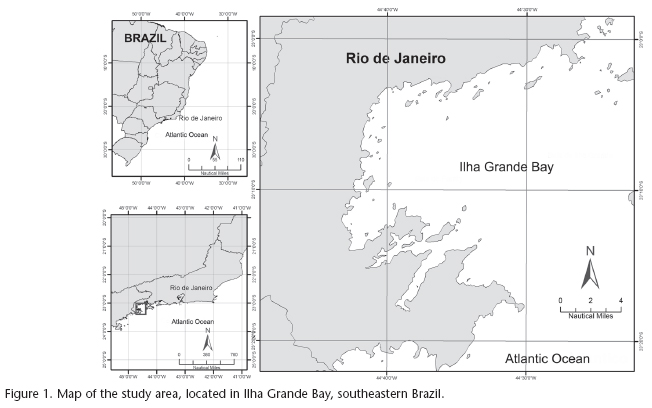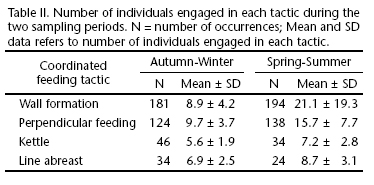Differences in distribution, prey species, season and social learning opportunities influence the feeding tactics used by marine mammals. Here, we analyze the coordinated feeding behavior of the Guiana dolphin, Sotalia guianensis (Van Bénéden, 1864, Delphinidae) and its relation to seasonality and the presence of calves. In a total of 201 feeding bouts, we observed four types of coordinated feeding tactics, which differed in frequency and in mean number of engaged individuals. Tactics in which dolphins used their bodies to herd and capture prey were the most frequent, presenting a higher frequency and engaging a higher number of individuals, suggesting that these tactics are better for capturing fishes which form larger schools. Furthermore, the seasons influenced the feeding behavior used by dolphins. During spring-summer, a longer duration of bouts and a larger number of individuals engaged in the feeding tactics was observed, which may be related to the seasonal spawning of larger schooling fish, such as Sardinella brasiliensis (Steindachner, 1879). Calves were present in 95% of all coordinated feeding tactic occurrences. This study indicates a complete preference of dolphins for coordinating their actions to capture prey and for the first time reports the presence of calves in the coordinated tactics and jumps. This broadens the current knowledge of the Guiana dolphin feeding tactics.
Behavioral flexibility; feeding repertoire; social foraging; social learning




